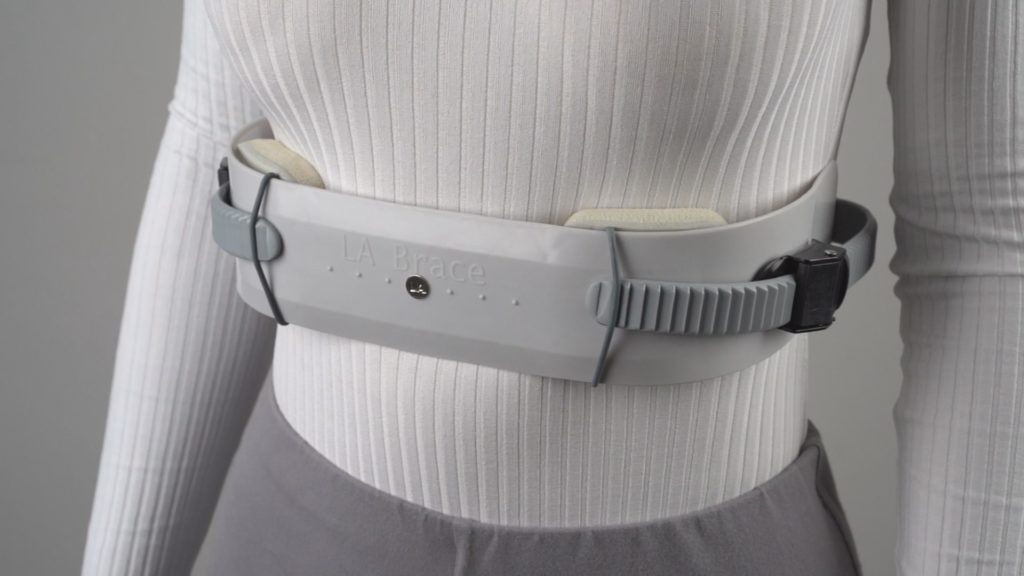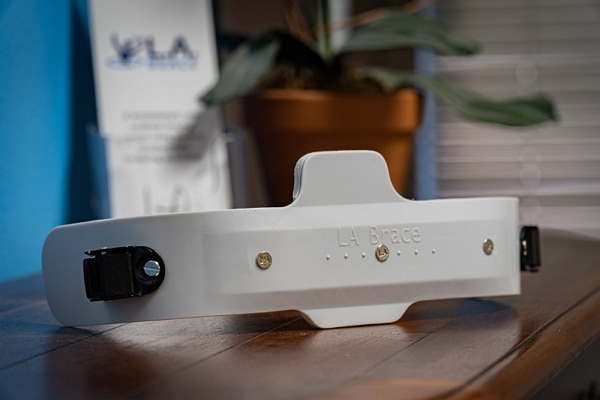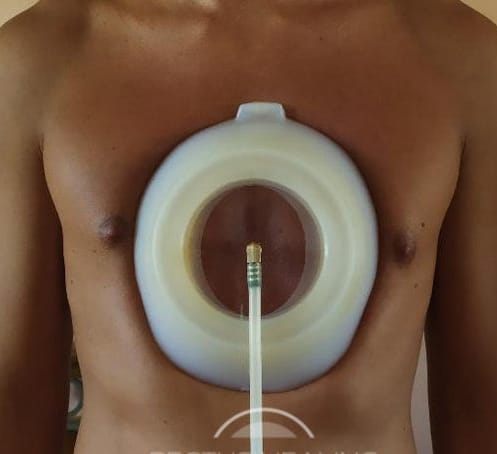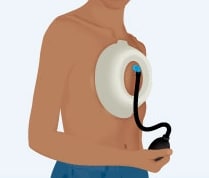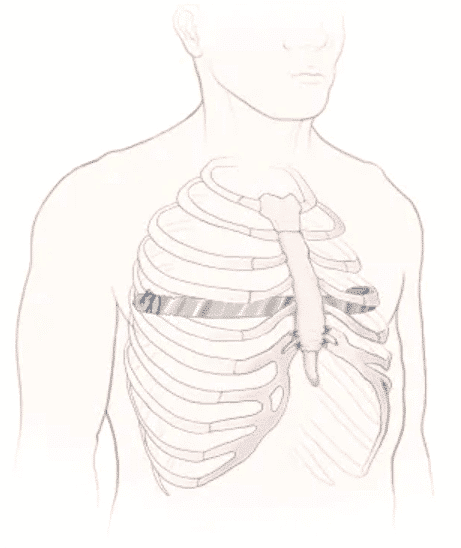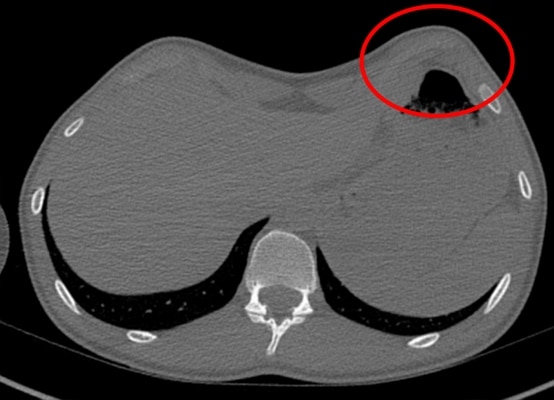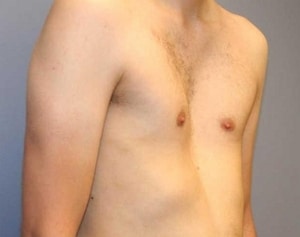

Pectus Excavatum (PE), also known as funnel chest, is a condition in which a person’s breastbone is sunken into his or her chest leaving a dent in the front of the chest. It happens because these ribs and the breastbone grow abnormally in an inward direction. It is more common in boys than in girls and typically worsens during the adolescent growth spurt. Severe cases of pectus excavatum can eventually interfere with the function of the heart and lungs. Even mild cases of pectus excavatum can make a person feel self-conscious about their appearance. There are different treatments for PE depending on the severity of the deformity. Most cases of PE also have a Rib Flare component. In mild cases wof PE that have a Rib fflare, bracing to reduce the Rib Flare has the additional benefit of reducing the excavatum.


